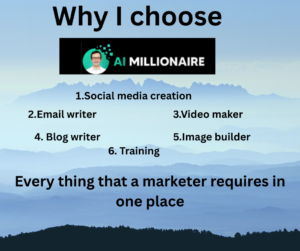Ready to Revolutionize Your Content? Here’s Why You Can’t Afford to Wait. I try new ways at times to test my results and this was a surprise
Blog by Peter hanley coachhanley.com
Remember a time when content was just about getting information out there? You’d write, you’d publish, and you’d hope for the best. Well, those days are long gone. The digital world has changed, and what worked even a year ago might not be getting you the results you want today. If you’re looking at your content and wondering why it’s not performing like it used to, it’s not you—it’s the rules of the game.
The simple truth is, your audience is different now. They’re savvier, they have shorter attention spans, and they’re bombarded with information. To break through the noise, you need to change your approach. You need to stop writing content for search engines and start writing for people. The key to this shift? Personalization.
Beyond a Name: What True Personalization Looks Like
When most people hear “personalization,” they think of adding a name to an email. While that’s a start, it’s just the tip of the iceberg. True personalization goes much deeper. It’s about understanding your audience’s specific problems, their goals, and their interests, then crafting content that feels like a one-on-one conversation.
Think of it this way: instead of a generic blog post titled “5 Ways to Grow Your Business,” a personalized approach would speak to a specific type of business owner. Maybe it’s “5 Marketing Hacks for Busy Freelancers” or “How Small Retail Shops Can Use Social Media to Boost Sales.” This kind of content shows your audience that you see them, you understand their struggles, and you have a solution that’s tailored just for them. It creates a powerful connection and builds trust in a way that generic content never can.
Why the Old Rules of Content Just Don’t Cut It Anymore
So, what exactly changed? A few things. First, search engine algorithms are getting smarter. They no longer just look for keywords; they analyze user behavior. If people click on your content but bounce away quickly, it sends a signal that your content isn’t helpful. On the other hand, if they read it all the way through, share it, and click on other links in your post, that’s a big win.
Second, the market is saturated. There’s a blog, a video, and a podcast for every topic imaginable. To stand out, you can’t just be another voice in the crowd. You have to be the voice they listen to. By personalizing your message, you move from being a commodity to a trusted resource. You create a unique space for yourself where your audience feels understood.
The Proof Is in the Clicks: My Own Experience
You might be thinking, “That all sounds great in theory, but does it actually work?” I can tell you firsthand, yes, it absolutely does.
I recently focused on personalizing my blog content. Instead of trying to please everyone, I began to write with a specific person in mind for each post. The result was incredible. Out of the 80 blogs I wrote last month, I saw a total of 100 clicks to my “about me” page—and these were from a minimized link at the top of the posts!
This isn’t a coincidence. It’s a direct result of the content resonating with readers on a deeper level. When they felt I was speaking directly to them, they became curious about who I was. That click to the about page wasn’t just a random act; it was an intentional action by someone who felt a connection and wanted to learn more. It’s the moment a reader starts to become a fan.
How to Start Personalizing Your Content Today
Ready to make the shift? It’s easier than you think. Start with these three steps:
1. Know Your Audience Inside and Out: Go beyond simple demographics. What are their biggest fears? Their daily routines? What websites do they visit? Create a detailed “persona” for your ideal reader. Give them a name and a story. This will make it much easier to write as if you’re talking to a friend.
2. Focus on “You,” Not “I”: Change your perspective. Your content isn’t a diary; it’s a solution. Use words like “you,” “your,” and “you’ll discover” to keep the focus on the reader. This simple linguistic shift can make your content feel much more personal and valuable.
3. Use Stories and Examples: People connect with stories. Instead of just listing facts, weave them into a narrative. Use case studies, personal anecdotes, or hypothetical scenarios that your audience can relate to. This makes your content not only more engaging but also more memorable.
The Takeaway
The future of content is personal. It’s about moving from a broadcast mentality to a conversational one. Your audience doesn’t want to be talked at; they want to be understood.
By making this change, you’re not just improving your content; you’re building a community of people who feel seen and valued. This is the path to creating content that doesn’t just get clicks but builds real, lasting relationships. It’s time to stop writing content for everyone and start writing for someone. The results, as I’ve learned, speak for themselves.

